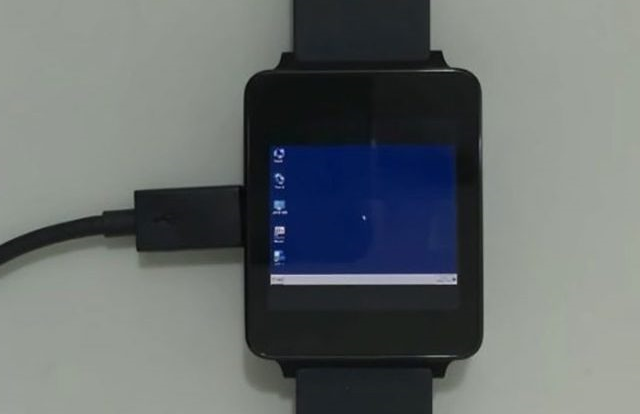
Setting aside for a moment that Windows 7 really wasn’t designed for devices as small as the 1.8-inch G Watch (indeed, in Hacking Jules’ video, it’s almost impossible to make out shortcuts on the desktop), performance is objectively awful. Windows takes a whopping three hours to boot, and registers touches only seconds at a time. Given the G Watch’s low-end silicon — a single-core Snapdragon processor, 4GB of internal storage, and a measly 512 MB of RAM — that’s not exactly surprising.
For those who feel compelled (out of boredom? Pursuit for internet karma?) to follow Hacking Jules’ foolhardy footsteps, he’s posted a detailed tutorial on just how he achieved his impressive feat of Windows software engineering. Be forewarned, though, that many of the methods involved require at least some familiarity with Android’s development tools and the Windows command line.
The Windows 7 hack is only the latest in what’s become a bizarre tradition: shoehorning apps onto Android Wear devices. Just last month, an intrepid programmer ported competitive first-person shooter mod Counterstrike to the LG G Watch, following successful efforts by others to boot Minecraft Pocket Edition, Doom, and gaming console emulators for the Game Boy Advance and Nintendo DS. Developers have gotten movies running on Android Wear devices too, and even full-fledged installations of Macintosh II OS and Windows 95.
Apple’s wearables aren’t immune to such shenanigans, either. In February, a crafty young developer ported iOS 4.2.1 to an Apple Watch, and more recently, developer Nick Lee managed to install the 20-year-old System 7. Neither, as you might expect, run particularly well.
